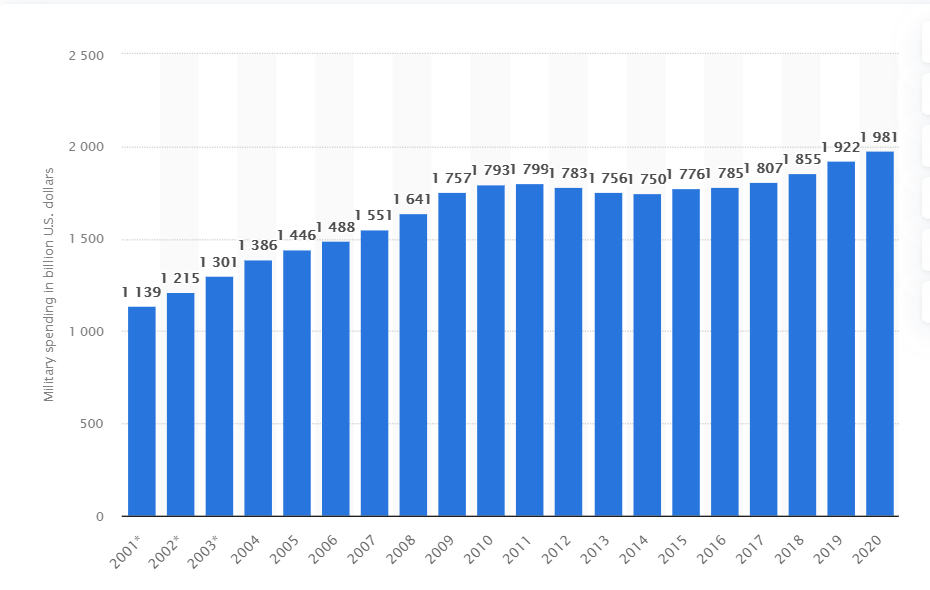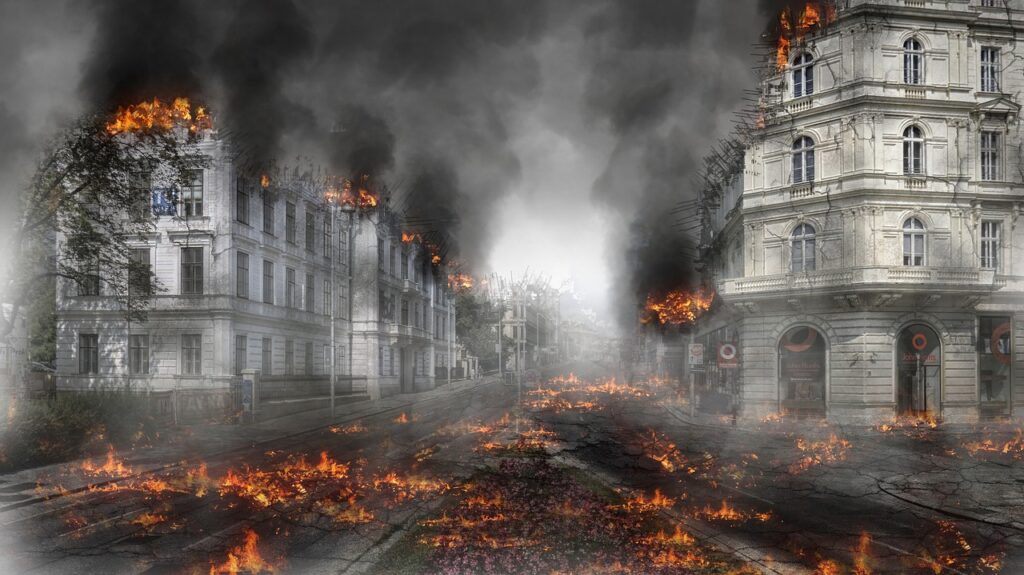Table of Contents
The armed conflicts were expected from the end of world war two till 1990. The common causes of armed conflicts were independence, democracy or communism, and world power. History depicted that in World War 1, 20 million soldiers and 20 million civilians died or were wounded. Similarly, about 75 million people were killed in the Second World War in armed conflicts (Engelbrecht and Hanighen, 2020). The death trolls indicated that the battles are the most prominent cause of mass destruction worldwide. In addition to the loss of human resources, the consequences of War include economic impact, social impact, and demographic impacts (Slovic et al., 2020). According to Cheap Essay Writing UK experts, most philosophers consider the present era a most peaceful period of earth’s history. But the facts say that the world is still in the period of War, not like as we witnessed in the past (world war one or World War 2) but in the form of biological warfare (recently faced as coronavirus).
A World Without War:
Apart from losing human resources, military wars destroy infrastructures, parks, and commercial plazas, decreasing resources and increasing debt on states. World wars induce pressure on the country’s economic growth; as indicated in Second World War, the U.S military costs were funded by debt, and at the end of the Second World War, U.S GDP had 120 % debt (Li et al., 2011). During the War, the stock market of the U.S suffered from a sharp drop, while after the end of the War, its stock market value reached high. These conditions represented that the wars had a deleterious effect on the GDP and tax revenue of the state.
Hence, the world without war portrays a peaceful picture of the world without economic burdens. IEP is an organisation that researches the war’s economic effects and peace of the world. This organisation is continuously working to shift the world’s concerns towards peace and the betterment of human beings. The world can be converted into the most peaceful place in the universe if the significant conflicts between states and within states are negotiable.
The United States was at the top of the list of countries with enormous military spending by 2020, with $ 778 billion in arms commitments. It accounted for 39 per cent of total military spending worldwide that year, amounting to $ 1.98 trillion. As of 2019, U.S. military spending was 3.4 per cent of U.S GDP (Skoens and Tulberg, 2020). The United States ranked lower in military spending as a percentage of GDP than Israel, Russia, and Saudi Arabia. Millions of people living in war zones have also been displaced by the War. The post-9/11 War has left at least 38 million people displaced to and from Afghanistan, Iraq, Somalia, Pakistan, Yemen, Syria, the Philippines, Libya, etc.
This number is greater than the total number of people fleeing any war since 1900, except for World War II. Figure 1 represents the worldwide military expenditure from 2001 to 2019. It expressed that in 2001, the world was expending 1.14 trillion dollars, while by 2019, this value reached 198 trillion U.S dollars (Hart and Spero, 2013). This data means that the countries are spending a large proportion of their budgets on preparing armed forces to ensure their safety. The World Without War will release lands from the economic burden of wars and provide freedom to live in the world. IEP achieves its goals by developing a new conceptual framework for defining peace, offering metrics for measurement, uncovering the relationship between peace, trade and prosperity and promoting a better understanding of the cultural, economic and political factors that contribute to peace.
In 2016, the global economy lost $ 14.3 trillion due to violence and conflict regarding purchasing power. This is equivalent to 12.6% of the world’s GDP (GDP) or only 12.6% of the world’s production and consumption (Vance, 2011). This substantial economic activity is wasted on creating, containing, and eliminating the consequences of violence. While one group of countries is plagued by Civil War, ethnic violence and terrorism, others are devastated by organised crime and high casualties. In any case, the human, social and economic costs are enormous. The War free world aims to release the social, economic or human mass extinction from states. Until now, 50 to 56 million people have been killed in war conflicts, and about 19 to 20 million died of War after-effects.

Benefits of Peace in the World (Shields, 2017):
The world without War can be created by the joint effort of many organisations with a motto to create War free world Figure 2 (Glick and Taylor, 2010). A series of national indices (N.I.) provides detailed information to analyse world peace and recognise regional differences within countries to be measured. These indices identify key socio-economic factors that are strongly related to peace and assess the economic consequences of peace at the regional level.
Another essential element that helps the world establish peace is worldwide terrorism indices (WTI). WTI explains the impact of terrorist attacks on the infrastructures, workforce and GDP values worldwide (Shields, 2017). By annually reporting the values of N.I. and WTI, the IEP tries to convert the world into the most peaceful place in the galaxy.
The world has taken a step in the right direction this year. Surprisingly, this year’s GPI report shows that despite the continuing humanitarian situation in the Middle East, the world grew in several countries in 2016 but deteriorated further – some 93 countries benefited from the world’s development, compared to 68 that have worsened (Amadei, 2020). These findings suggest that the world is progressing rapidly towards a peaceful world. This makes sense as more than 4 billion people live in 93 countries, which have improved peacefully. Still, many of them have declined in terms of political violence and homicide over the past decade.
Conclusion:
Throughout the history of humanity, men have been creating conflicts regarding different cultural, power, political, economic, ideological or religious matters. Lack of negotiation on such disputes results in within state or between states’ war’. By using different world terrorism indices and national indices, the world is trying to limit War-related conflicts. IEP is an organisation working with a motto of creating a war-free world. IEP is trying to spread positivity regarding peace in the world. In a few words, it can be summarised that a peaceful world- War Free World, reduces the cost of human resources (death trolls) and is also beneficial for the political, cultural, and economic freedom of the world.
References:
- Amadei, B., 2020. Revisiting positive peace using systems tools. Technological Forecasting and Social Change, 158, p.120149.
- Engelbrecht, H.C. and Hanighen, F.C., 2020. Merchants of Death: A study of the international armament industry. Routledge.
- Glick, R. and Taylor, A.M., 2010. Collateral damage: Trade disruption and the economic impact of war. The Review of Economics and Statistics, 92(1), 102-127.
- Hart, J.A. and Spero, J.E., 2013. The politics of international economic relations. Routledge.
- Li, C., He, C. and Lin, C., 2018. Economic impacts of the possible China-US trade war. Emerging Markets Finance and Trade, 54(7), pp.1557-1577.
- Shields, P.M., 2017. Limits of negative peace, faces of positive peace.
- Skoens, E. and Tullberg, R., 2020. World military expenditure. In The Arms Race and Arms Control 1984 (pp. 52-89). Routledge.
- Slovic, P., Mertz, C.K., Markowitz, D.M., Quist, A. and Västfjäll, D., 2020. Virtuous violence from the war room to death row. Proceedings of the National Academy of Sciences, 117(34), pp.20474-20482.
- Vance, J.F., 2011. Death so noble: memory, meaning, and the first world war. UBC Press.
